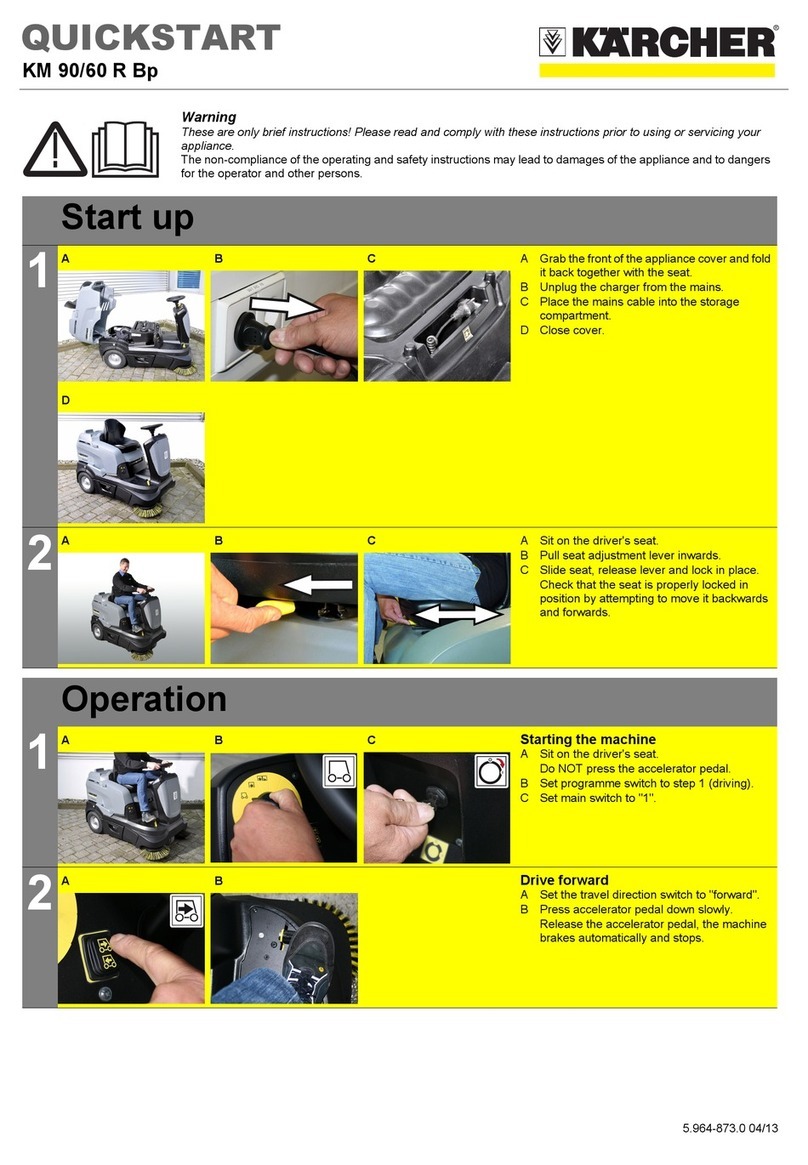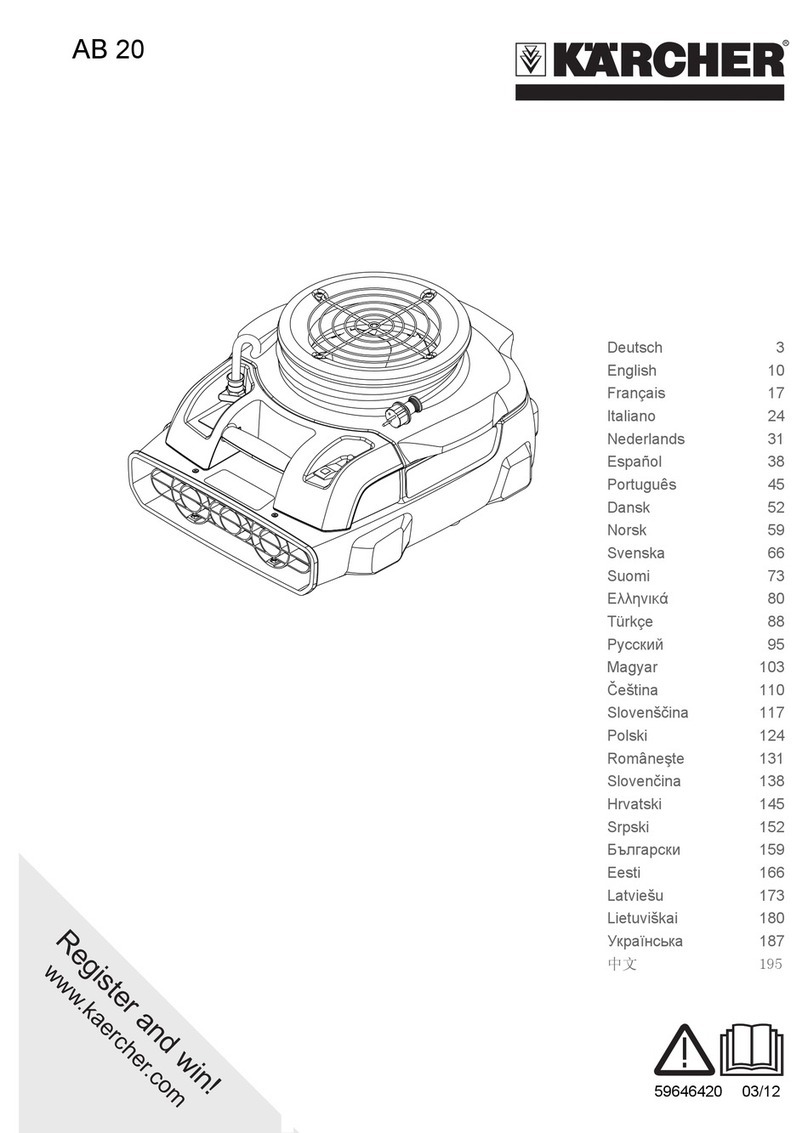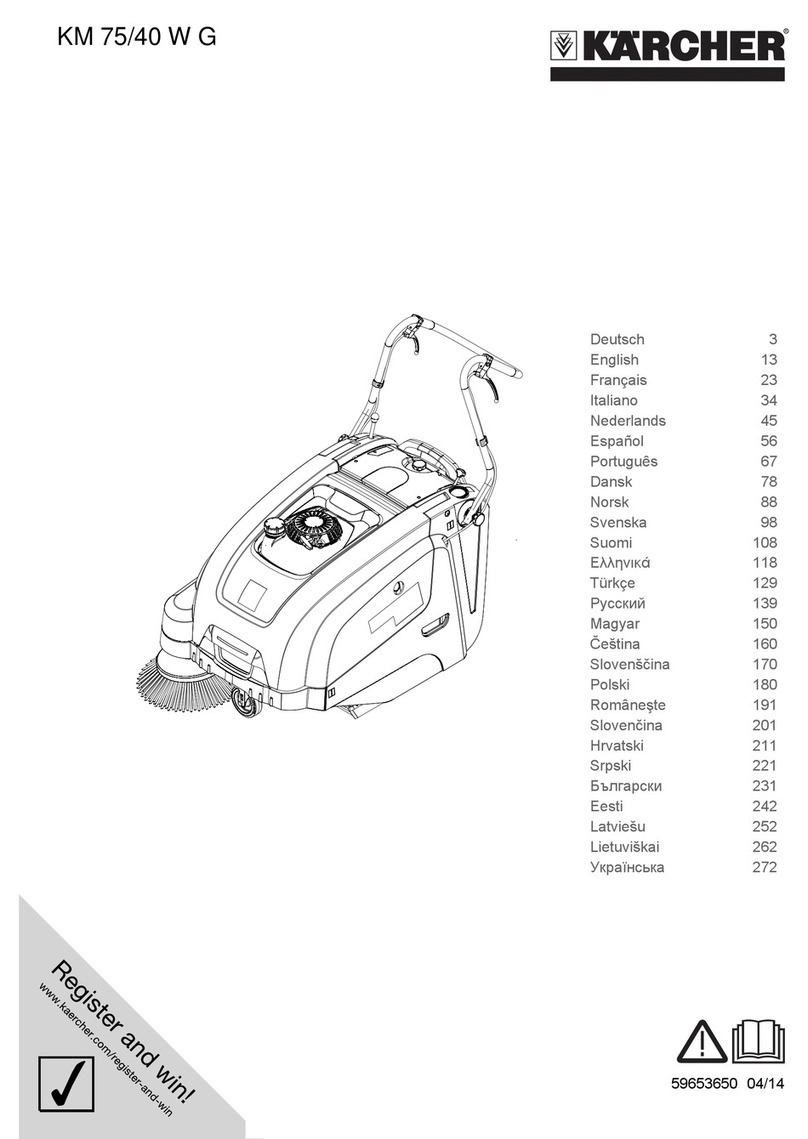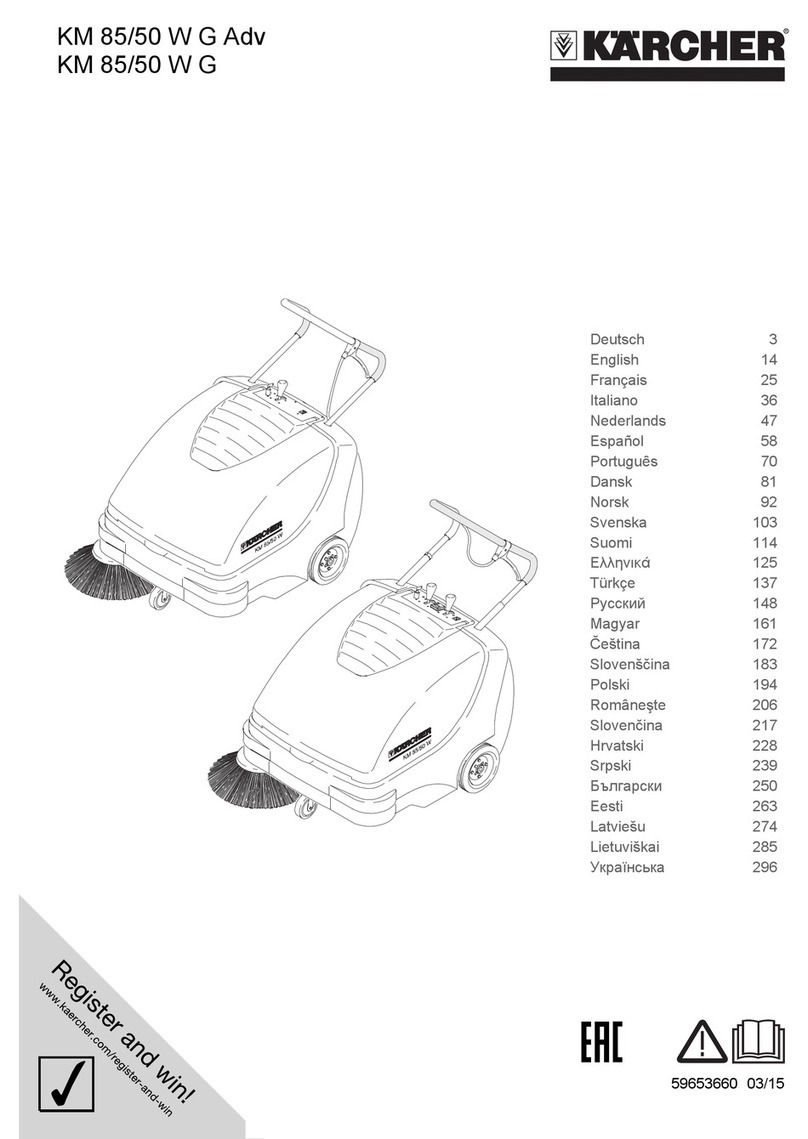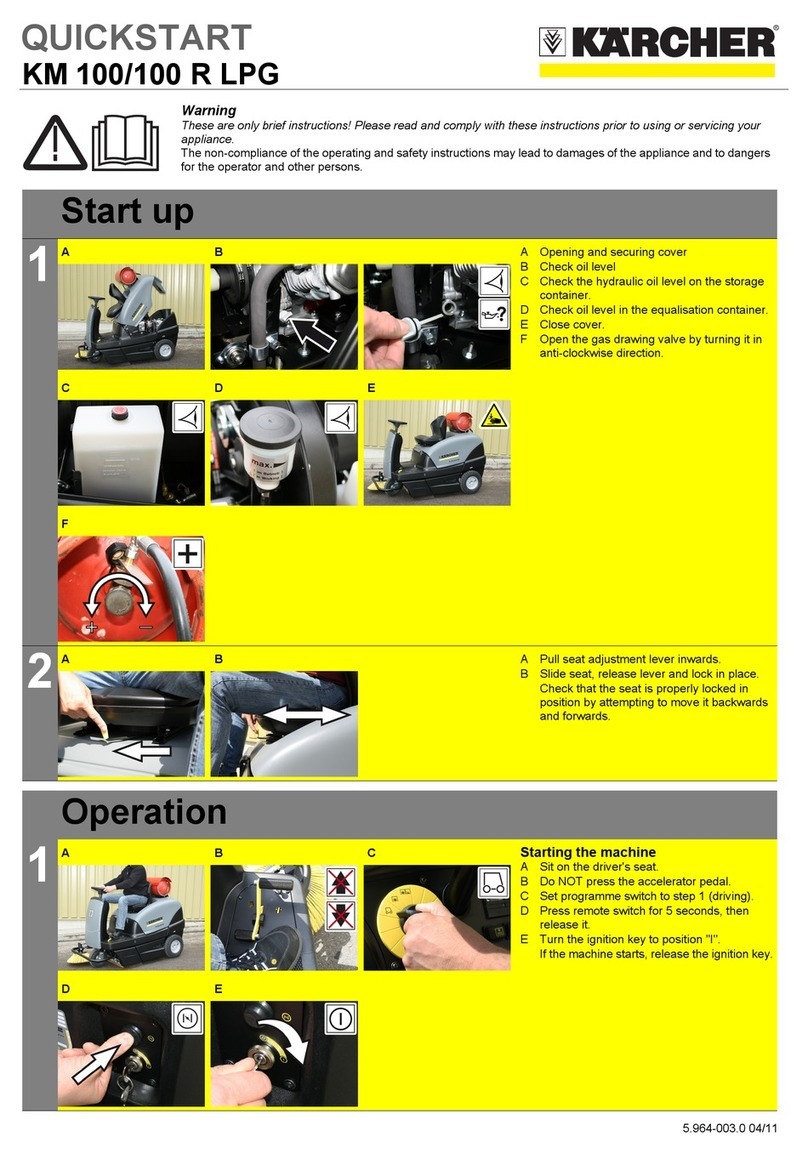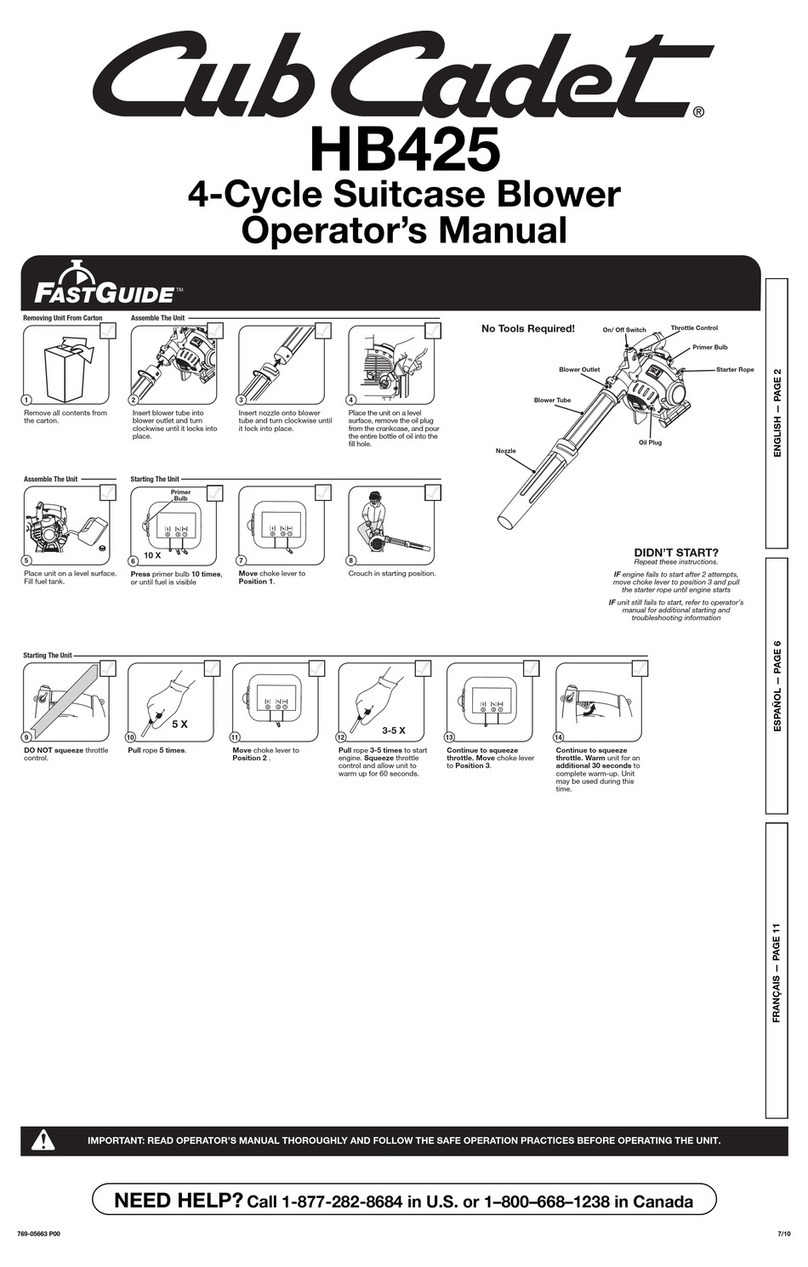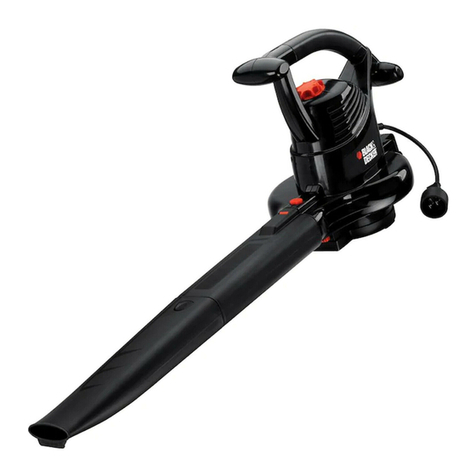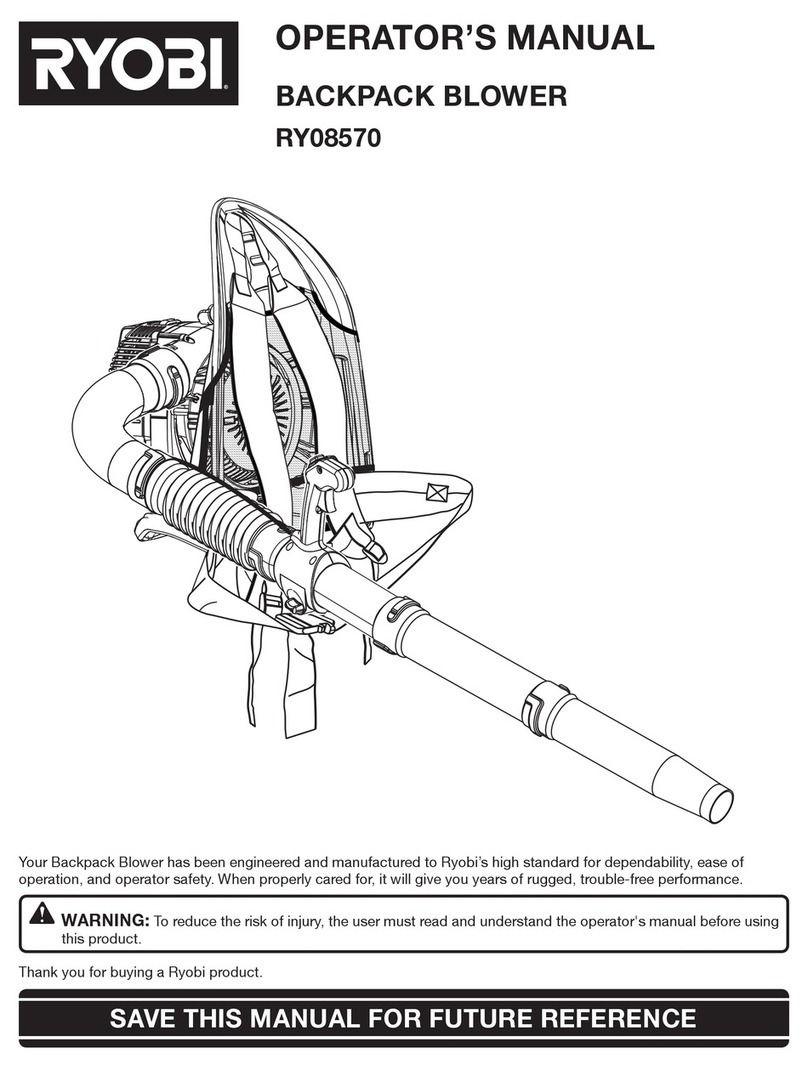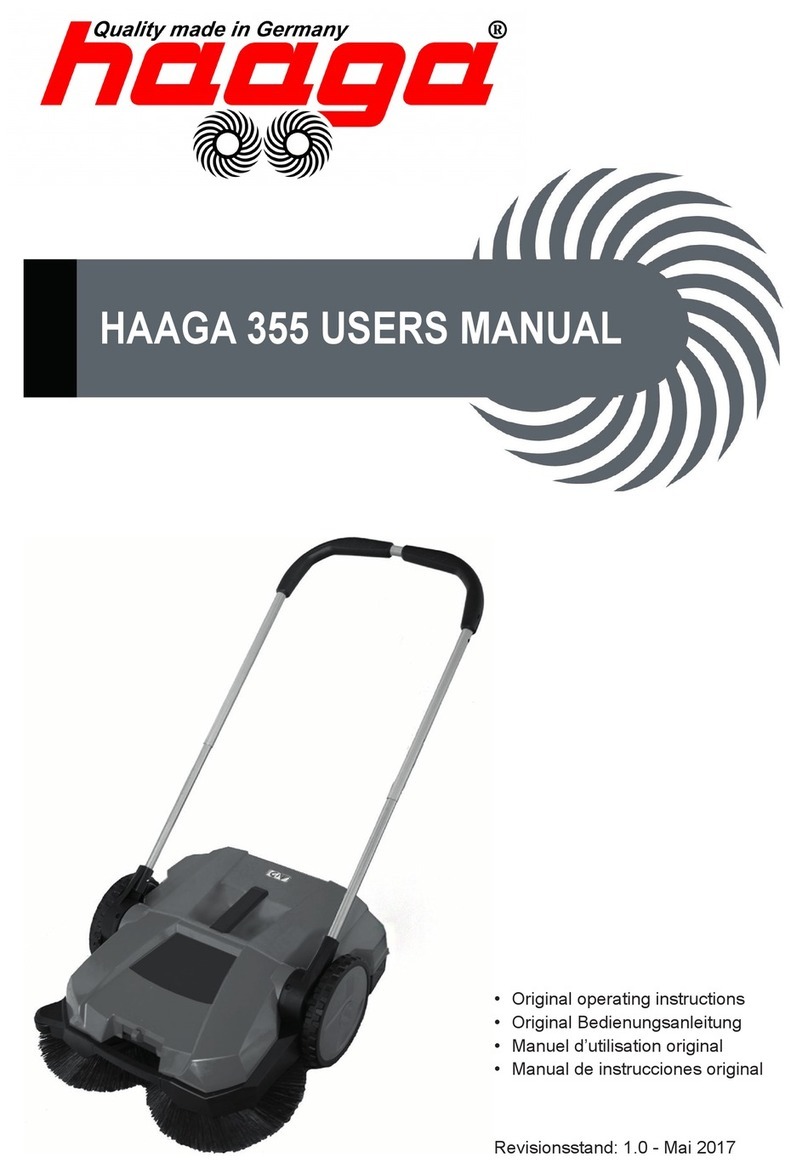KMR 1250 LPG User Instructions English
25
Contents Safety Regulations................................................................................................ 26
Liquefied gas ................................................................................................................ 26
On behalf of the environment ....................................................................................... 27
Safety Directives for LPG Motor Vehicles .............................................................28
Obligations of the factory management and the employee ......................................... 28
Maintenance by experts ............................................................................................... 28
Initial operation/operation............................................................................................. 28
In storage rooms and in repair workshops ................................................................... 29
Intendedusage ..................................................................................................... 30
Sweeperfunctions ................................................................................................ 30
Prior to initial start-up............................................................................................ 31
Unloading procedure.................................................................................................... 31
Pushing the sweeper .................................................................................................... 31
After pushing the sweeper............................................................................................ 31
Open cover.................................................................................................................... 31
Operatingcontrols................................................................................................. 32
Preparing the sweeperfor use............................................................................... 33
Installing/changing the gas cylinder............................................................................. 33
Adjusting the driver’s seat............................................................................................. 33
Starting the sweeper..................................................................................................... 34
Initial driving trials ......................................................................................................... 34
Moving off and sweeping.............................................................................................. 34
Braking.......................................................................................................................... 34
Stopping the sweeper and switching off....................................................................... 34
Emptyingthewaste hopper................................................................................... 35
Important information .................................................................................................... 35
Cleaningthefilter .................................................................................................. 35
Automatic cleaning ....................................................................................................... 35
Manual cleaning ........................................................................................................... 35
Typicalapplications............................................................................................... 36
Sweeping on dry ground .............................................................................................. 36
Sweeping on damp or wet ground ............................................................................... 36
Picking up larger items (sticks, tins, etc.) ...................................................................... 37
Overcoming obstacles .................................................................................................. 37
Shutting thesweeper down for longerperiods ....................................................... 37
Cleaningandcare ................................................................................................. 36
Maintenance ......................................................................................................... 38
First engine oil change ................................................................................................. 38
Initial inspection after 8 operating hours ...................................................................... 38
Daily maintenance........................................................................................................ 38
Maintenance intervals .................................................................................................. 38
Maintenance tasks................................................................................................ 39
Checking tyre pressures ............................................................................................... 39
Checking the oil level ................................................................................................... 39
Filling up with oil ........................................................................................................... 39
Changing the engine oil ............................................................................................... 40
Cleaning or replacing the air cleaner........................................................................... 40
Check gas installation .................................................................................................. 40
Checking the hydraulic system..................................................................................... 40
Safety information which must be observed when handling batteries. ....................... 41
Checking the level of electrolyte in the battery............................................................. 41
Charging the battery ..................................................................................................... 41
Replacing the sealing skirts ......................................................................................... 42
Replacing the side brush.............................................................................................. 42
Replace light unit .......................................................................................................... 42
Adjusting the sweeping pattern .................................................................................... 43
Replacing the main brush roller ................................................................................... 43
Replacing fuses ............................................................................................................ 44
Replacing the dust filters .............................................................................................. 44
Troubleshooting ..................................................................................................... 45
Technical specifications ........................................................................................ 46

